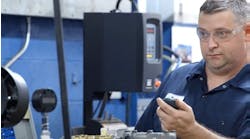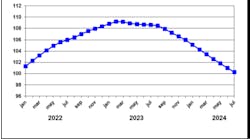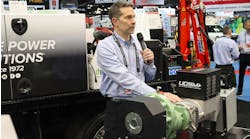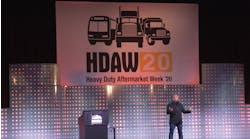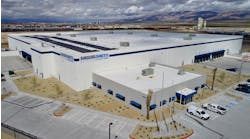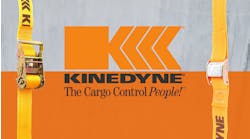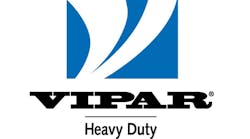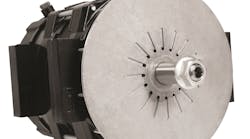Eaton Corporation announced that 24 of the 35 trucks featured in the recent CALSTART “World’s Largest Hybrid Ride & Drive” used Eaton hybrid power systems.
The event took place during the 2008 Hybrid Truck Users Forum (HTUF) National Conference in South Bend, Ind., October 14-16, and it reinforced Eaton’s growing leadership role in the development and commercialization of hybrid transportation solutions.
Eaton joined truck makers Navistar, Daimler Trucks North America and PACCAR in showcasing the vehicles, which included a wide range of models and body configurations outfitted with Eaton’s hybrid electric systems and Eaton’s hybrid Hydraulic Launch Assist (HLA) System. The trucks on display with Eaton hybrid power systems were configured for utility, van delivery, dump, refrigeration, landscape, beverage, refuse and wrecker applications.
PACCAR also displayed a Class 8 tractor with an Eaton hybrid electric system. Depending upon application and operating conditions, the variety of Eaton hybrid power solutions at HTUF are capable of achieving fuel cost savings ranging from 30 to 60 percent, with similar percentage reductions in harmful emissions.
“The trucking industry’s interest in hybrid technology is growing at an accelerated pace,” said Kevin Beaty, business unit manager for Eaton’s Hybrid Power business. “More and more fleet owners are taking a close look at the fuel-saving and environmentally-friendly features that a hybrid vehicle has to offer. We’re proud to be at the forefront of this trend, and we’re well prepared to meet the demand.”
Eaton, noted Beaty, has invested in three separate hybrid power solutions for commercial vehicles, including hybrid electric, HLA, and series hydraulic.
Eaton’s hybrid electric system employs parallel-type, diesel-electric hybrid architecture, incorporating an electric motor/generator between the output of an automated clutch and input of an Eaton automated transmission. The system recovers energy normally lost during braking and stores the energy in batteries. When electric torque is blended with engine torque, the stored energy is used to improve fuel economy and vehicle performance for a given speed or used to operate the vehicle with electric power only. The system can also be designed to provide energy for use during engine-off worksite operations, further reducing noise, emissions and fuel costs. Eaton’s diesel-electric hybrid powertrain is available as an optional powertrain in certain models of International, Freightliner, Peterbilt and Kenworth trucks. Eaton is also developing plug-in hybrid (PHEV) architecture.
The Eaton HLA System utilizes regenerative braking and is being initially targeted at refuse trucks. During braking, the vehicle’s kinetic energy drives the pump/motor as a pump, transferring hydraulic fluid from the low-pressure reservoir to a high-pressure accumulator. The fluid compresses nitrogen gas in the accumulator and pressurizes the system. The regenerative braking captures about 70 percent of the kinetic energy produced during braking. During acceleration, fluid in the high-pressure accumulator is metered out to drive the pump/motor as a motor. The system propels the vehicle by transmitting torque to the driveshaft. The Launch Assist has two different settings, the economy mode and the performance mode. Eaton’s HLA is currently in a limited launch phase at Peterbilt Motors, with availability in its Model 372 refuse chassis.
In a series hybrid hydraulic system, the conventional vehicle driveline is replaced by the hybrid hydraulic powertrain and energy is transferred from the engine to the drive wheels through fluid power. The vehicle uses hydraulic pump/motors and hydraulic storage tanks to recover and store energy, similar to what is done with electric motors and batteries in hybrid electric vehicles. Eaton’s series hydraulic hybrid system is currently in an advanced stage of development, with a prototype unit in daily operation at package delivery giant UPS.
